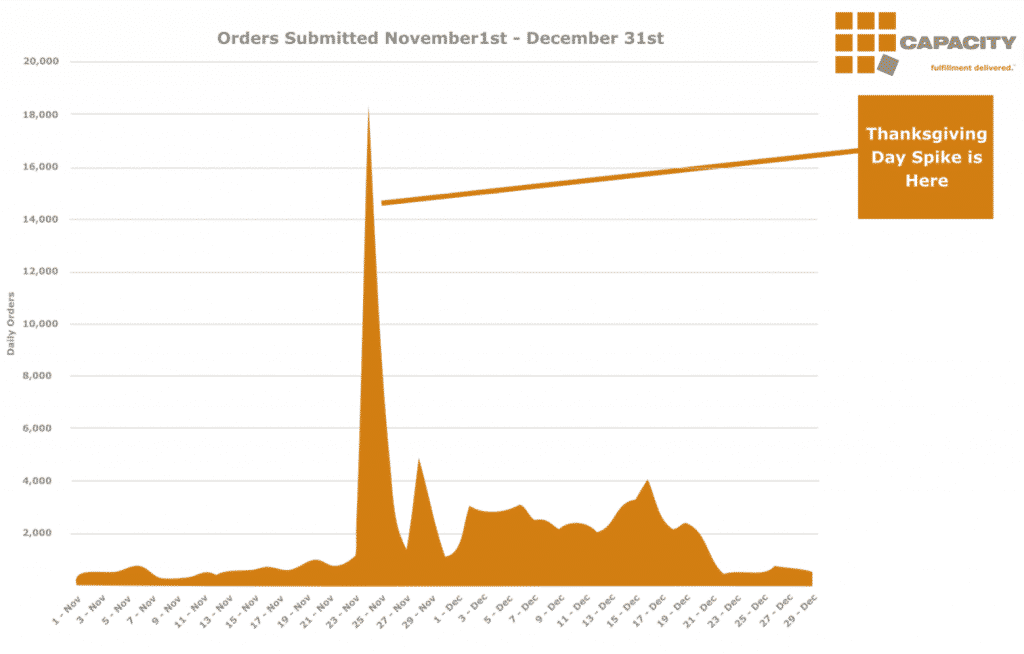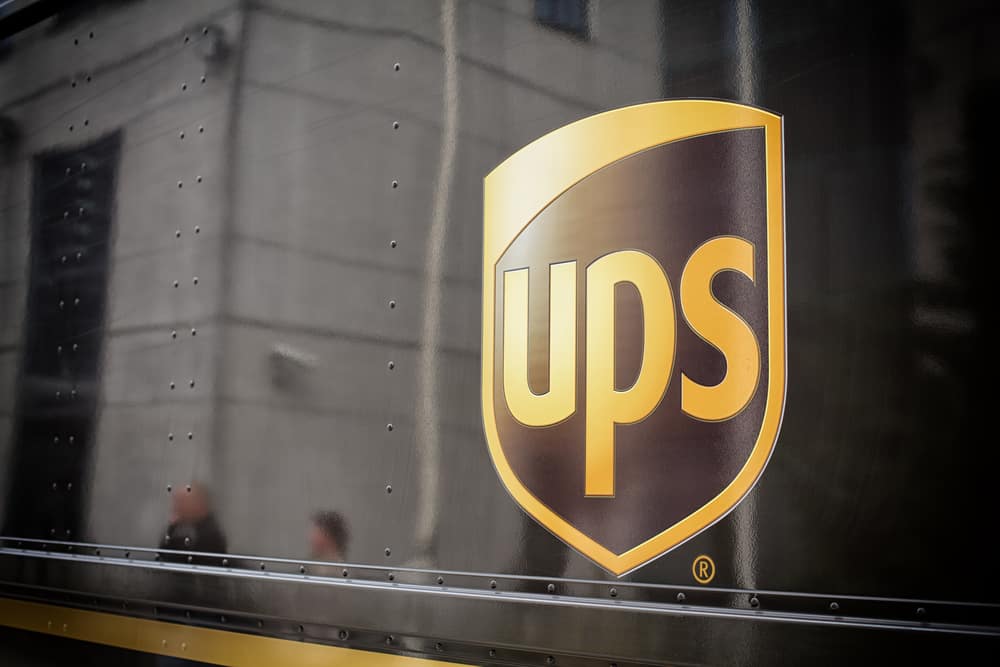What the UPS New Peak Charge Means For Your Business
Retailers and consumers will have a new cost to contend with for the 2017 peak season. For the first time in its history, UPS has announced that it will add an additional fee, the UPS New Peak Charge, to deliveries made during much of the holiday season.
It remains to be seen how competitors will respond, but shippers must be prepared for the likelihood that the other half of the parcel duopoly FedEx will follow suit. If all peak season shipments are subject to a new surcharge, it will undoubtedly influence how retailers prepare for the all-important holiday period.

The fact that Big Brown is only assessing the surcharge on its residential deliveries tells us all we need to know about the decision. It is clearly an attempt to address the rising cost of making deliveries during the busiest part of the year.
For example, the chart above shows a typical Thanksgiving spike in orders handled by our team last year. Remember, this is just one client! Spread this scenario across all North American e-commerce and it's easy to see why UPS is testing new ways to address the issue.
But how will it impact the most important part of the year for many retailers?
Unpacking the UPS New Peak Charge
These are some of the key details of what UPS is calling its “New Peak Charge”:
- Surcharge periods: 11/19/17 to 12/2/17 and 12/17/17 to 12/23/17.
- No surcharge applied to deliveries between 12/3/17 to 12/16/17.
- Ground delivery surcharges of 27 cents.
- Next Day Air surcharge of 81 cents.
- 2nd Day Air + 3 Day Select surcharge of 97 cents.
- In the final week before Christmas UPS will only assess surcharges on its "Next Day Air," "2nd Day Air," and "3 Day Select" delivery services.
The surcharge is applied on top of costs for outsized shipments - also known as dimensional weight- and shipments weighing more than 150 pounds (hundredweight) which will still incur the usual extra charges.
UPS will not say how much revenue it expects the surcharge to generate, but parcel carriers have been struggling to keep pace with the explosion of e-commerce deliveries in recent years. In some years they have overbuilt capacity, losing profitability, and in others they have underbuilt, royally pissing off consumers.
The surcharge will prompt online retailers to review shipping costs for the forthcoming peak. This could lead to adjustments to the timing of certain promotions, which parcel carriers would prefer to see spread more evenly across the holidays. This may be a first major move in the direction of a new wave of demand pricing. As always it will be interesting to see how others respond, especially the new really big kid (more like an 8,000 pound gorilla) on the parcel carrier block, Amazon.
So how should you approach this unbudgeted cost as we prepare for another busy peak season?

How to Handle the Peak Season Surcharge
The surcharge will not make or break promotional campaigns for peak season, but it will certainly influence them. If you're putting together a sales plan for the holiday it's time to think about when you want to drive extra demand.
For example, UPS has clearly decided to waive the surcharges for that two-week period - December 3rd to December 16th - because carriers see demand dip slightly between the peaks of Black Friday and the days preceding Christmas. If retailers can persuade customers to delay some of their holiday shopping until after the Thanksgiving break, the leveling off of demand could be beneficial for everyone.
This requires a combination of targeted promotions and identifying customers who will be most willing to hold their holiday purchases for a few extra days.
Another important factor is how FedEx responds to the new UPS charge.
If FedEx decides not to implement a surcharge - or prices its peak fees lower than UPS - the impact could be less dramatic. Retailers can simply switch to FedEx for the periods in which the surcharge is applied. Indeed, FedEx vs. UPS is a frequent topic of discussion for retailers seeking to minimize their shipping costs while maintaining delivery standards.
However, it’s worth noting that this competitive distinction could move significant delivery volume to a single carrier during this peak period, and create unforeseen consequences. Or maybe foreseen consequences: FedEx has had its own problems handling recent holiday periods, so there is no guarantee that it won’t experience more issues if it loads more deliveries into an already overburdened system.
For the moment, it makes sense to watch any announcements closely and to formulate sales promotions that move some demand into that early December delivery period.
The underlying logic of UPS surcharge is sound. Balancing demand across the full holiday period will help keep deliveries flowing and customers happy. Making this happen is easier said than done. Consumers are inevitably attracted to traditional sales events.
Nonetheless, there are many positives to looking outside the big sales days. Can you get a jump on the competition by starting your sales a week or two earlier? Or perhaps your marketing team can create a new sales event that drives orders into the weeks when no surcharge applies?
The overall goal is of course to delight your customers and make sure they get both a deal and their delivery in time for the holidays. If you can convince them to do so during the first two weeks of December, all the better for your business (and the overburdened parcel carriers!)